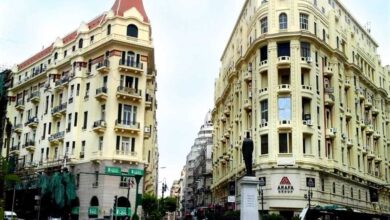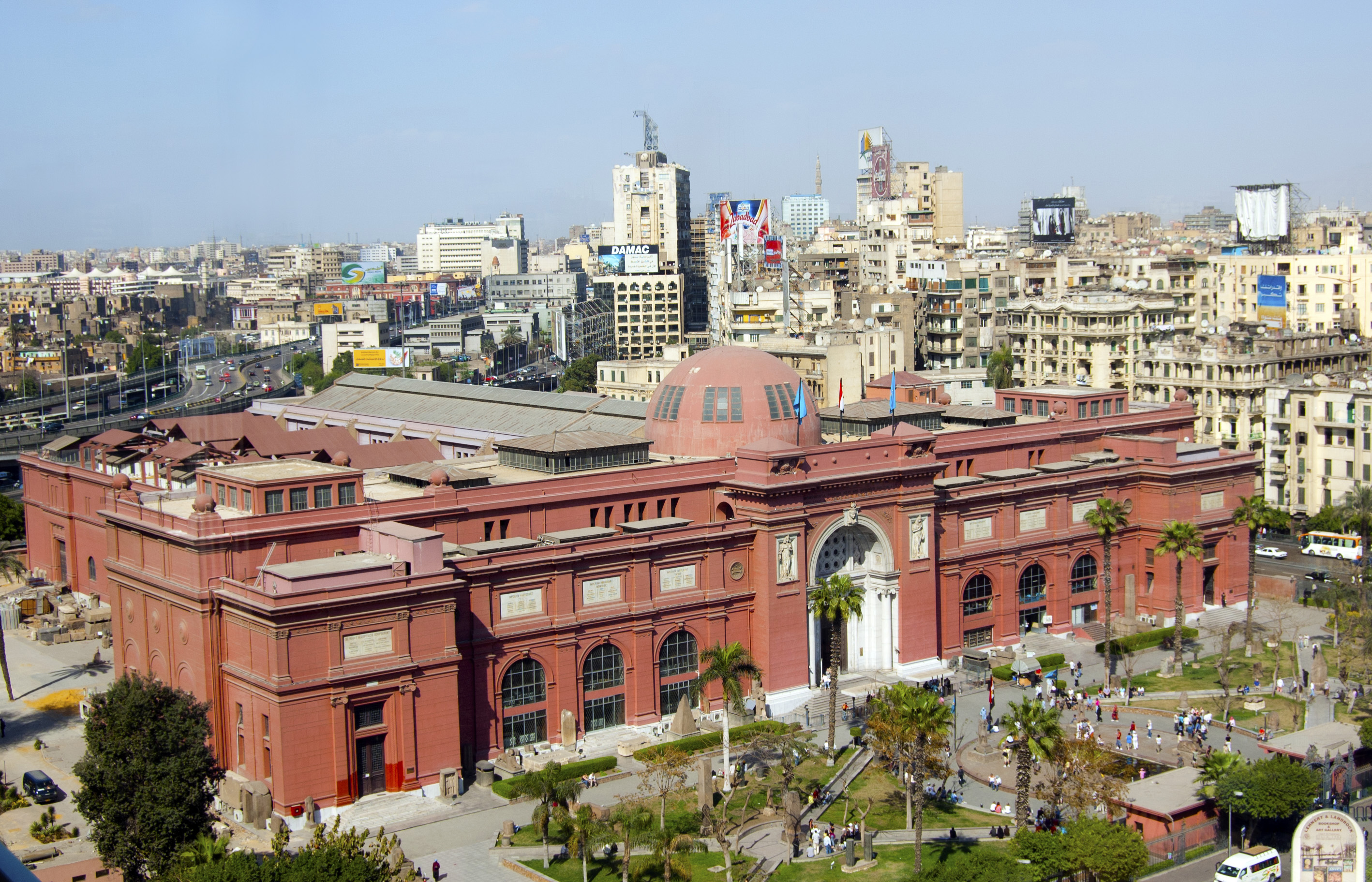About a dozen artists were hard at work on Wednesday evening, painting a 100-square-meter section of asphalt nearby the KFC at Tahrir Square. From 7:00 to 10:00 that night, a crowd watched closely from just outside the tape-delineated boundaries of the painters’ “canvas”.
The finished product was a beautiful, vividly colored medley of revolutionary graffiti, centered on a large representation of a dove being stabbed by a giant, bloody knife. It’s expected to be a central feature of Tahrir Square society while the sit-ins last, showing the world that “the people at Tahrir Square are peaceful artists and well-cultured people, not thugs,” according to Mostafa al-Banna, one of the project’s organizers.
“This painting is about the martyrs of the revolution,” said Banna. “They have not yet gotten their rights.” The dove, in the middle, is meant to represent their souls, as well as the soul of the revolution.
The group of artists behind this project, known as the Young Artist Coalition, is an independent movement that started after the 25 January revolution and currently has a tent set up in Tahrir Square. They have collaborated on several works of street art all over Cairo, in celebration of their recently found freedom of expression.
“Recently, we’ve broken into the spotlight with an elaborate project in the northwestern Imbaba district,” said Ashraf Rasslan. “We just finished painting murals along the buildings of a whole street in the neighborhood of Ezbet al-Saayda.”
Another artist, Doaa al-Desouky, said, “Every time we do something like this, a crowd gathers.” Most of the time, members of the crowd offer helping hands, and some, especially children, enthusiastically offer to participate in the act of painting itself.
This time at Tahrir, however, the artists would not let crowd members participate because of the painting’s complexity. Desouky was nevertheless touched when she saw a young boy enthusiastically whip out a pen anyway and start to write a few small words.
The work attracted fascinated gazes after it was completed. Passersby stopped to take a look at its many different components and guess about the meaning of the whole piece.
Above all, people were impressed with the artists’ display of free expression. Onlooker Ahmed Abdel Ghany optimistically asserted that during the time of repression, “the good and bad alike were repressed. With our new freedom of self-expression, you’ll find now it’s mostly good things that come out, and this is because we are naturally a good people.
He then motioned with his hand to the square in general, adding, “This is all just a beginning for us to build on. We’re still learning.”
Nader Kadry, an Egyptian-American, expressed joy at witnessing the explosion of free expression following the revolution. “Our newly-attained freedom has unleashed an explosion of creativity, which will drive this country for many years to come,” he said.
Echoing this sentiment were viewers Galal Ibrahim and Doha Gabr, who said that the piece made them want to stay in Tahrir and sit in with the other protesters
“[The painting] shows that the Nation of Tahrir Square is full of culture and refinement, and we want this spirit, this utopia, to spread to the outside,” said Ibrahim. “This is really our primary demand.




